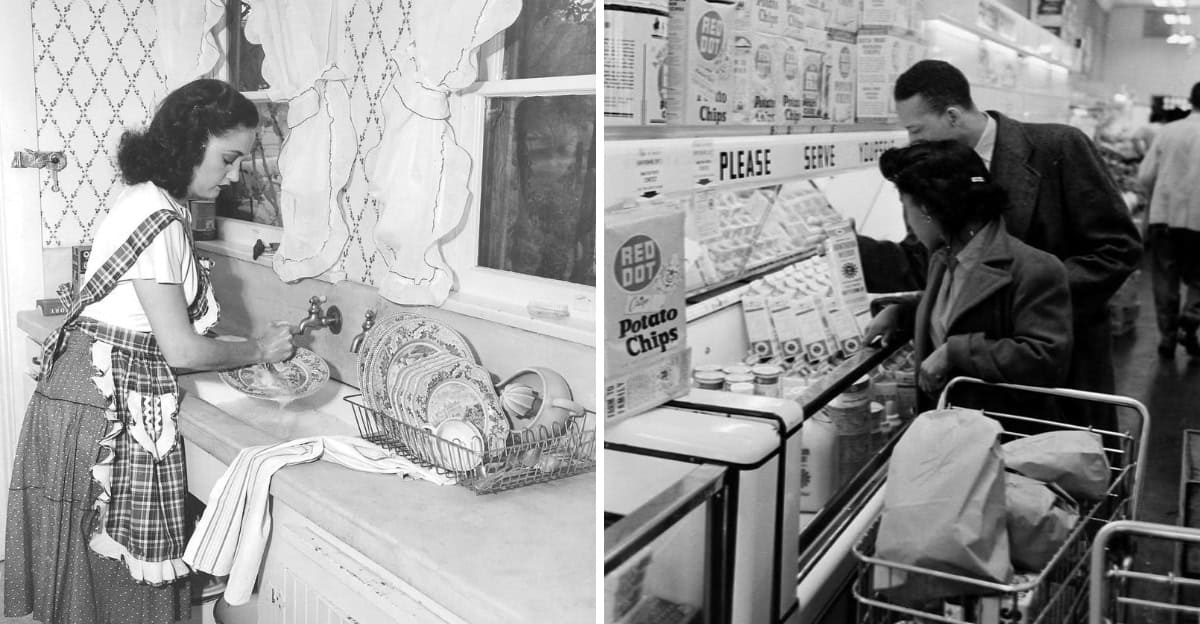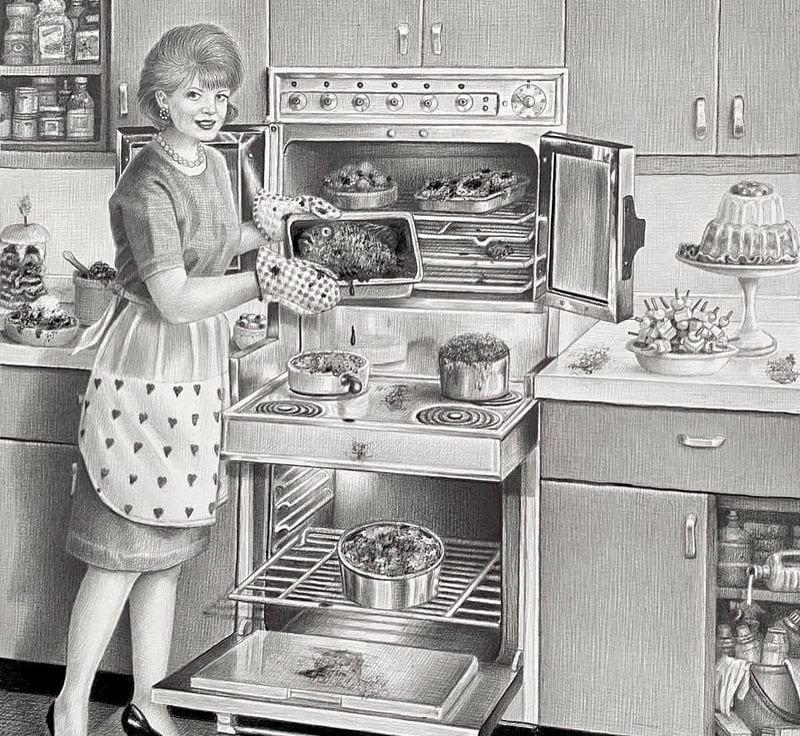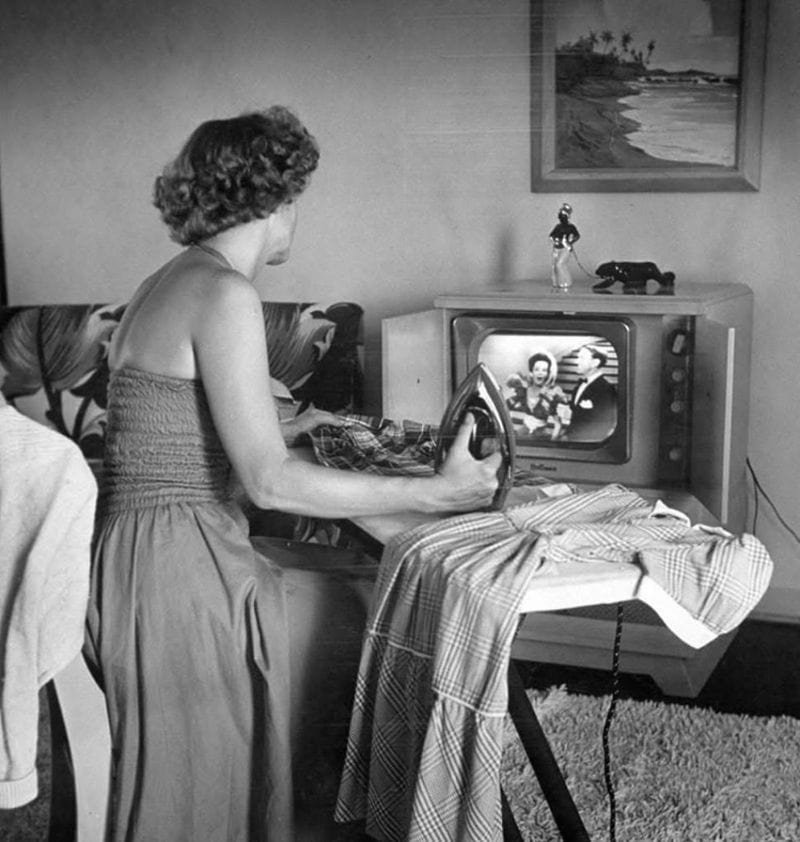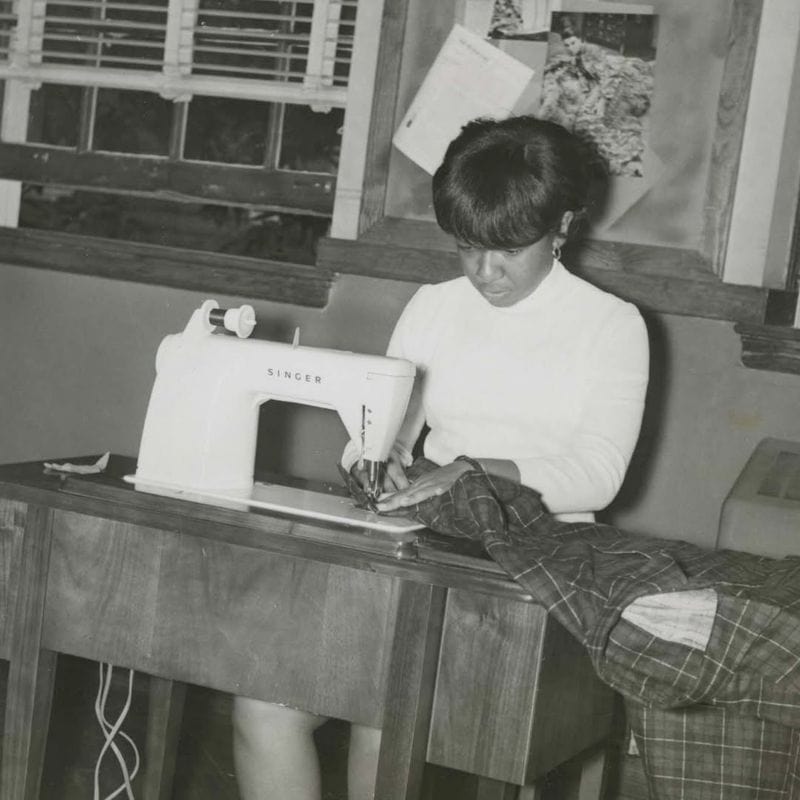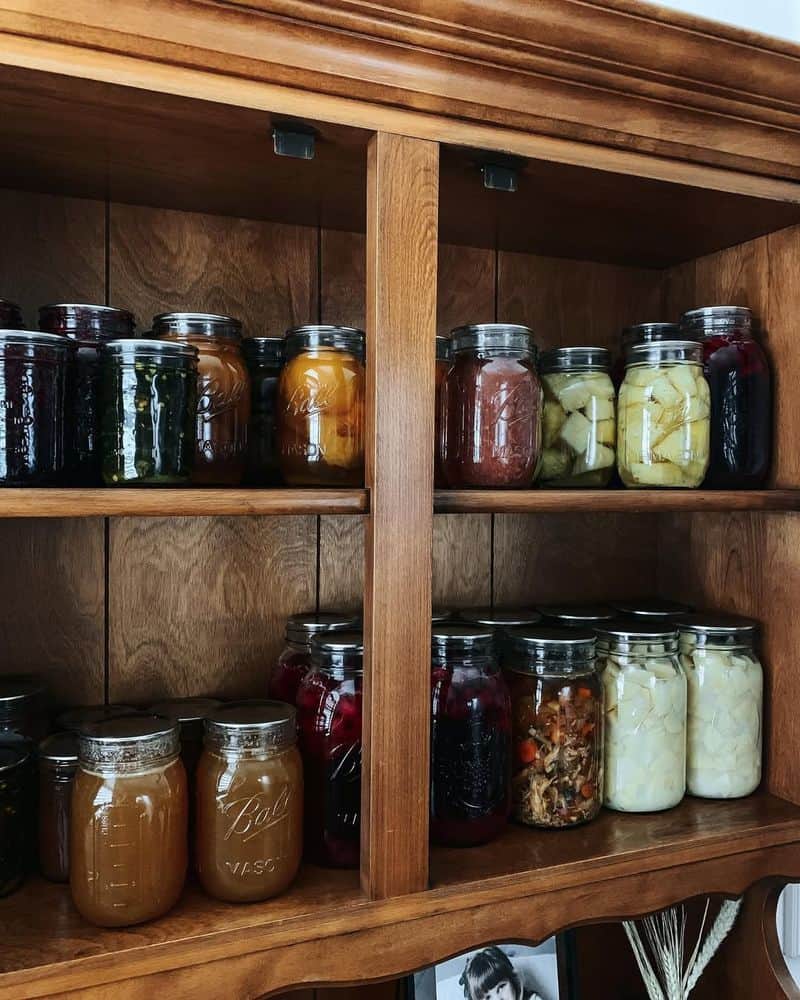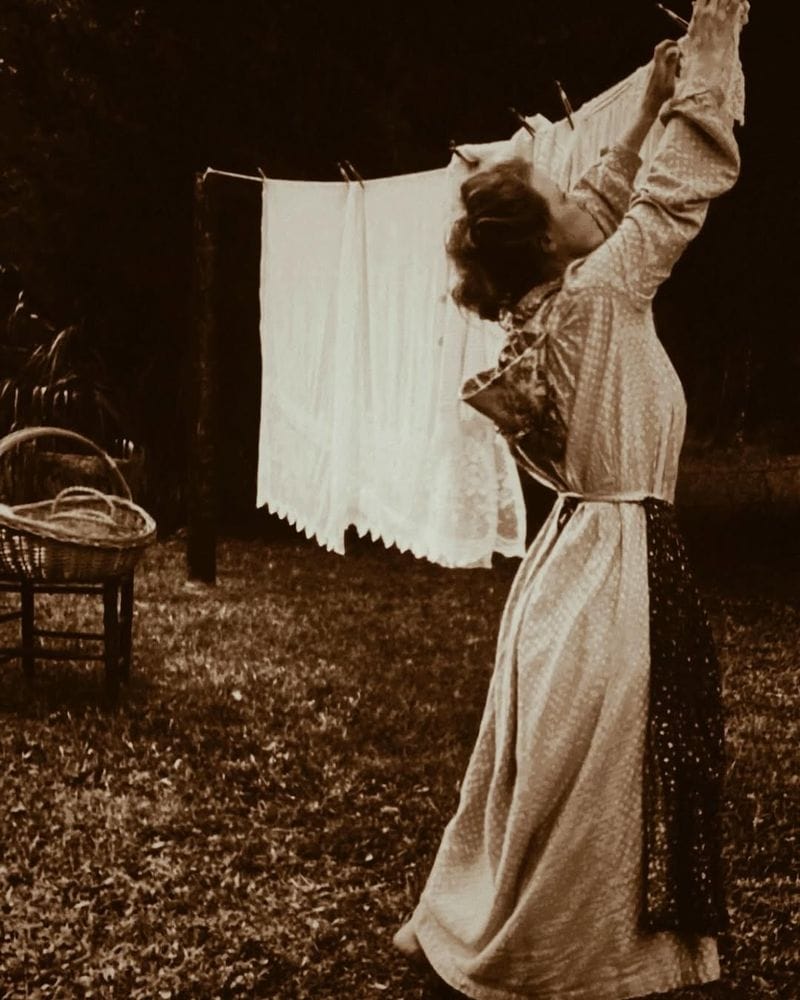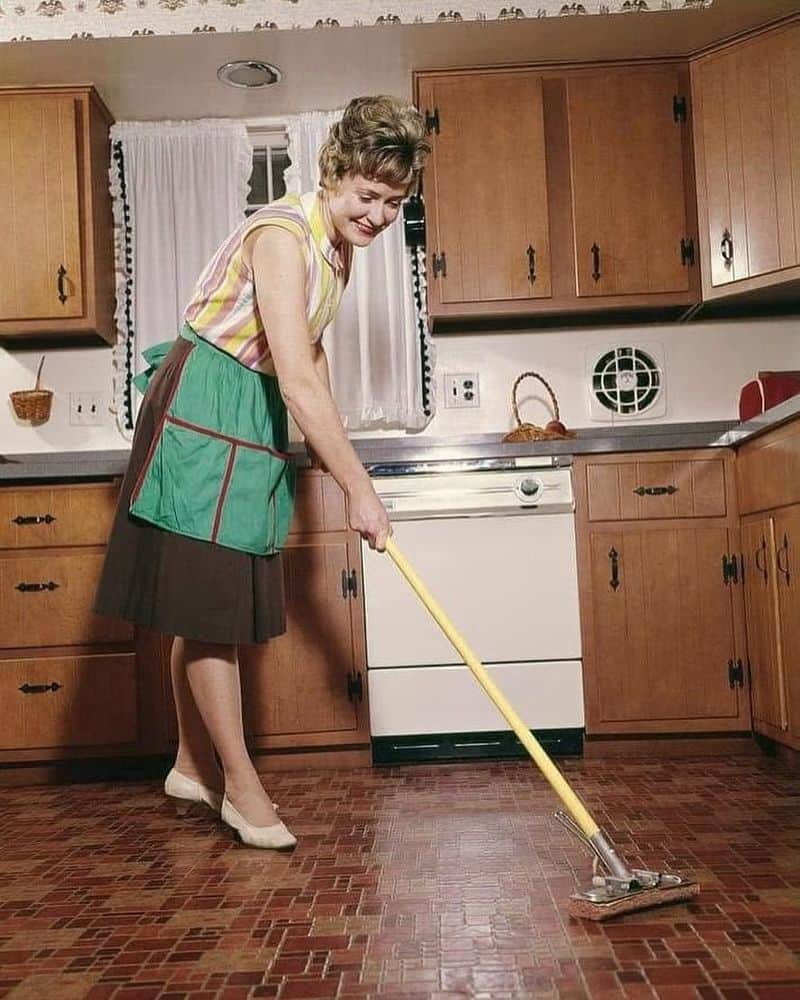The 1960s were a time of change, yet some things remained constant, like household chores. Boomers fondly or not-so-fondly remember the daily grind of keeping things tidy.
These chores, while essential, often took up much of their free time. From cooking meals to managing finances, each task carried its own charm and challenge.
Let’s explore 10 chores that defined the generation.
1. Daily Meal Preparation
Daily meal preparation in the ’60s was no small feat. With no modern gadgets, every dish was crafted with love and sweat.
Homemakers often spent hours in the kitchen, juggling pots and pans like culinary acrobats. They embraced the challenge of creating hearty meals for the family.
Recipes were passed down or clipped from magazines, each one a relic of its time. Homemakers mastered the art of improvisation, turning humble ingredients into delightful feasts.
The satisfaction of a well-cooked meal brought joy, despite the labor involved. No wonder boomers have a deep appreciation for the art of cooking.
2. Handwashing Dishes
Before dishwashers became common, handwashing dishes was an inevitable chore. Each meal concluded with a sink full of plates, cups, and silverware longing for a good scrub.
A boomer’s childhood often involved rolling up sleeves for dish duty.
This chore was a chance for bonding, with siblings arguing over who washed and who dried. The rhythmic motion of scrubbing, rinsing, and stacking was oddly calming yet tedious.
The satisfaction of seeing a rack full of clean dishes was unparalleled. It taught patience and teamwork, leaving a lasting impression on those who grew up in the ’60s.
3. Ironing Clothes
Ironing clothes in the ’60s was an art form. With the advent of synthetic fabrics, wrinkles became a nemesis.
Every garment needed pressing, from dresses to slacks. The weekly ironing session was a ritual many boomers remember well.
The clinking of the iron, the hiss of steam, and the soft scent of freshly pressed clothes filled the home. It was a skill requiring precision and care, a testament to one’s dedication to appearance.
Despite the tedium, there was a meditative quality to ironing, making it a chore both loathed and loved by many.
4. Sewing and Mending
Sewing and mending were indispensable skills in the ’60s. Clothing wasn’t easily discarded; it was cherished and maintained.
From hemming trousers to patching up a favorite shirt, these tasks were a regular pastime.
Mothers often taught their children the basics, passing down essential skills. The rhythmic hum of the sewing machine was a common household sound.
Fabrics and patterns of the era showcased creativity and resourcefulness.
This chore was more than just stitching; it was an expression of love and thriftiness that defined a generation’s approach to fashion and sustainability.
5. Canning and Preserving Food
Canning and preserving food were crucial in the ’60s for ensuring a steady supply of essentials. Fresh produce from gardens was jarred with care, a testament to self-sufficiency.
This chore involved boiling, sealing, and storing jars, a methodical yet rewarding task.
Homemakers took pride in their shelves lined with colorful jars. It was not just about preservation but a celebration of the harvest. Families relished these homemade treats during the off-season.
This chore taught the value of preparation and savoring the fruits of one’s labor, a lesson remembered fondly by many boomers.
6. Handwashing Laundry
Before automatic washers, handwashing laundry was a weekly tradition. Clothes were scrubbed on washboards, then wrung out and hung to dry.
It was a physically demanding task, leaving hands wrinkled and clothes fresh.
Laundry day was an all-day affair, requiring stamina and patience. The sight of clothes swaying in the breeze was a rewarding end to the toil.
This chore was a communal activity, with neighbors exchanging tips and children playing amid drying sheets. It was a time when simplicity ruled, and clean clothes held a special satisfaction.
7. Daily Shopping Trips
Daily shopping trips in the ’60s were a staple of household management. Without the convenience of large refrigerators, frequent visits to the local grocer were necessary.
Lists in hand, homemakers browsed aisles filled with essentials.
These trips were more than just errands; they were social occasions. Neighbors exchanged news and recipes, strengthening community bonds. Prices were compared, and bargains were hunted with a keen eye.
This routine taught budgeting skills and the joy of finding a good deal, leaving a lasting impact on the boomers’ approach to shopping.
8. Floor Care
Floor care in the ’60s meant constant vigilance against dust and dirt. Carpets needed vacuuming, hardwood required sweeping, and tiles demanded mopping.
Each type of flooring had its own cleaning ritual, ensuring a spotless home.
Homemakers developed a keen eye for cleanliness, attacking dirt with determination. The satisfaction of gleaming floors was worth the effort.
This chore also provided a sense of accomplishment, a clean home reflecting personal pride. It’s no wonder boomers often reminisce about the time spent making their floors shine.
9. Dusting and Polishing Furniture
Dusting and polishing furniture were essential for maintaining a polished home.
Each piece was treated with care, from ornate cabinets to simple coffee tables. The scent of polish and the sight of gleaming surfaces were rewards in themselves.
This chore was a meditative practice, performed regularly to keep dust at bay. It represented an attention to detail that was central to ’60s homemaking.
Boomers fondly recall the tradition, often associating it with family heirlooms lovingly maintained. The shine of polished wood was a reflection of the era’s dedication to home aesthetics.
10. Managing Household Finances
Managing household finances in the ’60s was a meticulous task. Without digital conveniences, everything was done by hand. Balancing checkbooks and paying bills required precision and dedication.
This chore was often a shared responsibility, with family members contributing to budgeting discussions. It taught financial discipline and foresight, skills valued even today.
Despite the challenges, there was a sense of control in knowing where every penny went. Boomers remember the lessons learned from managing money, a timeless skill handed down through generations.

